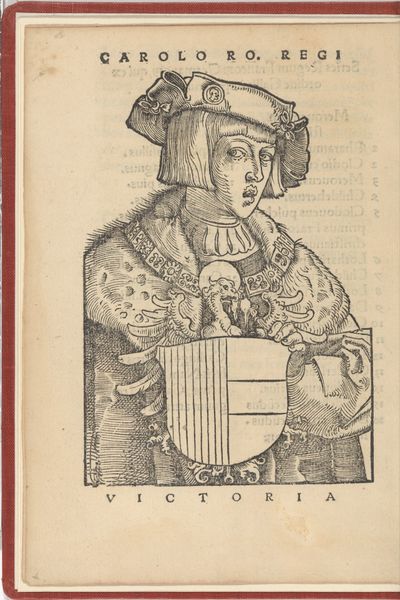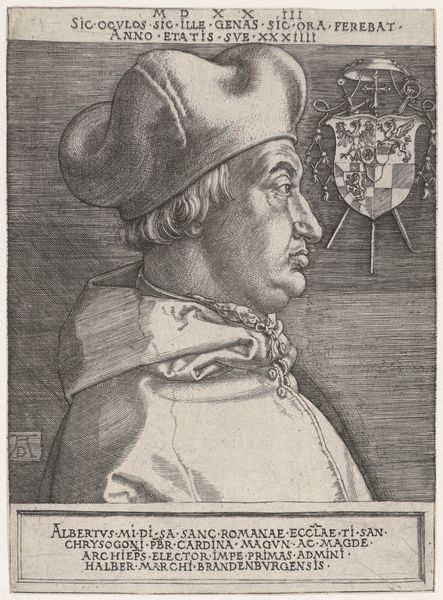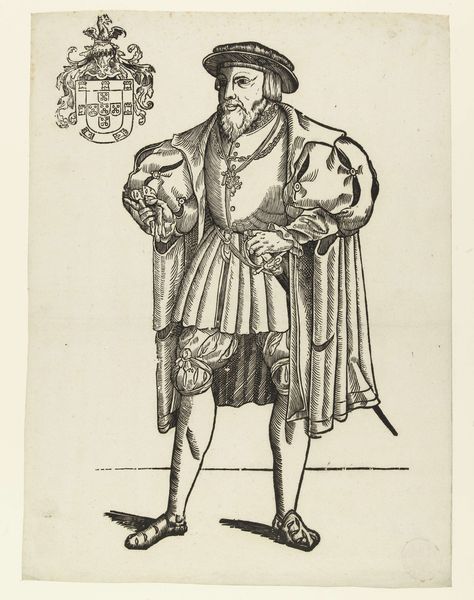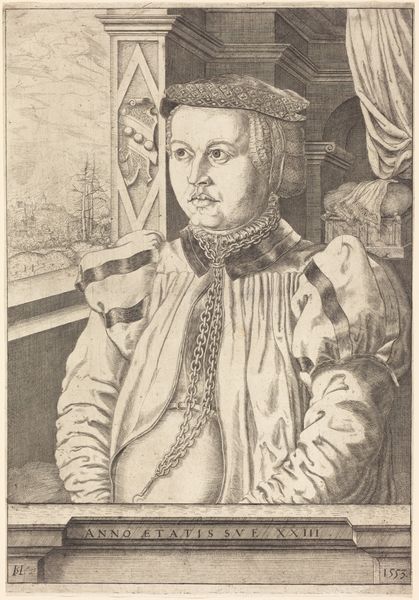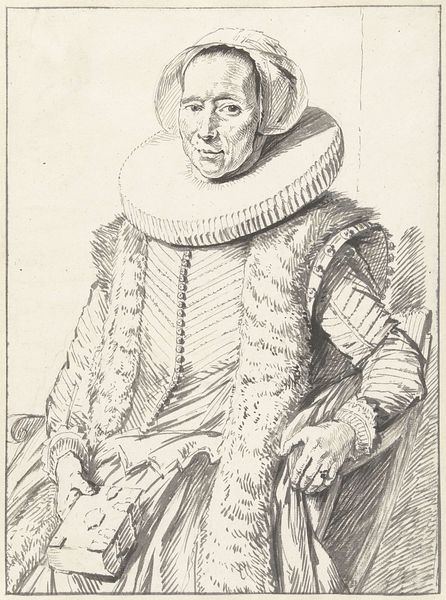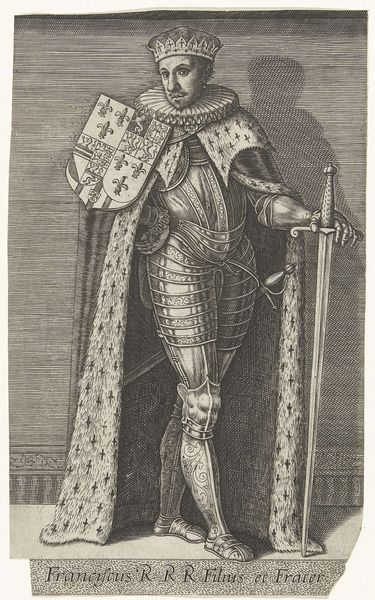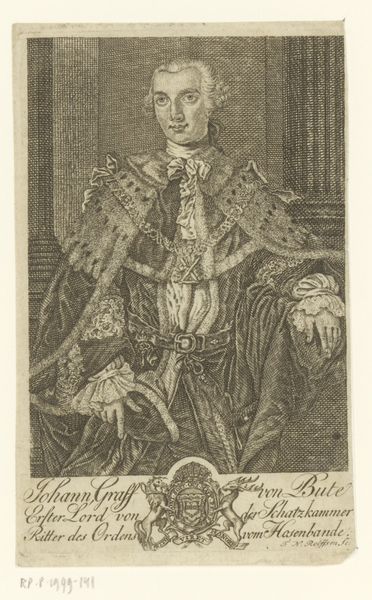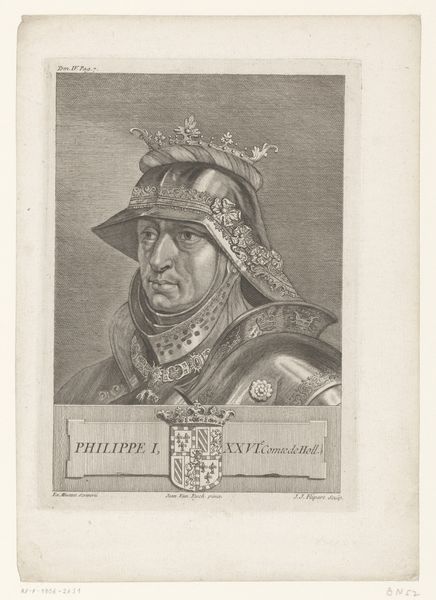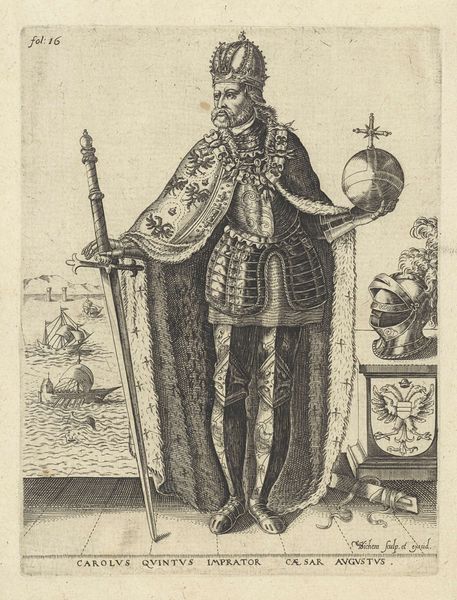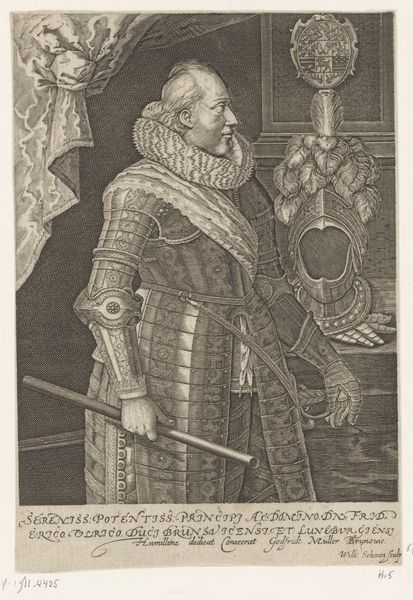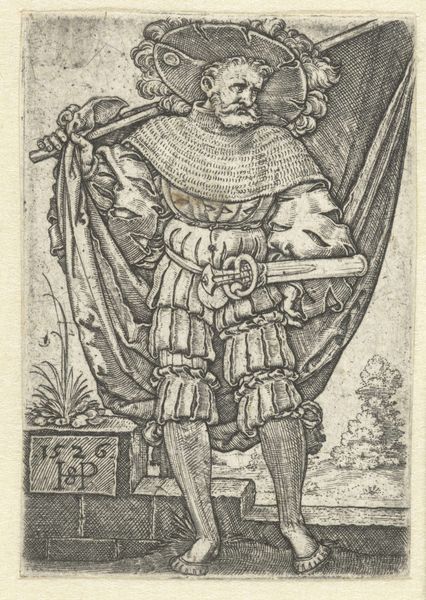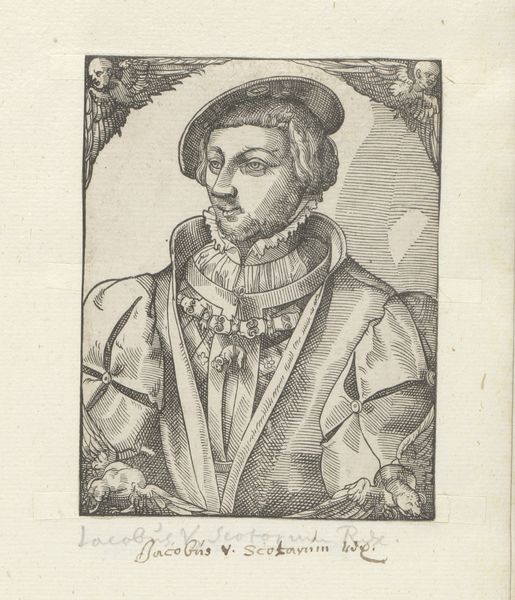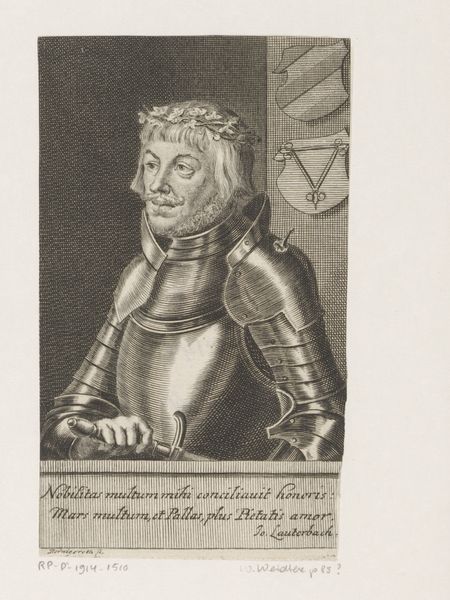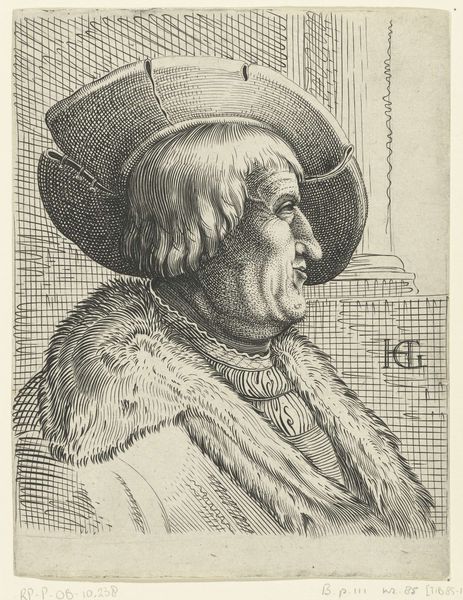
drawing, print, engraving
#
portrait
#
drawing
# print
#
pen sketch
#
northern-renaissance
#
engraving
Dimensions: Sheet: 7 1/4 x 4 3/4 in. (18.4 x 12 cm)
Copyright: Public Domain
Curator: Hans Baldung, working in the Northern Renaissance style, created this print titled "Portrait of Charles V" sometime between 1500 and 1545. What strikes you about it? Editor: There's a stillness, a formal quality that almost feels frozen in time, even a bit unsettling. It has this strong sense of... well, not exactly "power" as we think of it now, but rather a weight, a density to the whole composition. The stark contrasts in the lines create a sense of intensity. Curator: Absolutely. As a print, this work reflects a shift in art's accessibility during that era. Suddenly, imagery wasn’t solely confined to wealthy patrons or religious institutions. We begin to see the rise of art as a political tool and as propaganda. Editor: Precisely. And consider the deliberate choice of black and white – it underscores the absolute nature of authority and control during that time. He’s presented with heraldry – practically dripping with it – literally showing the insignia of power and wealth. The work asks, "Who has the power to determine what's represented and whose voices get to be heard?" Curator: Baldung strategically uses detail. Notice the lines of the fur trim, the delicate details within his jewelry—it's clearly meant to showcase the immense wealth of Charles V and the Holy Roman Empire at that time. Editor: Yes, and let’s also look at the gaze, just slightly off. This makes me consider his authority: Charles seems presented more as a symbol than as a fallible man. Curator: Indeed, printmaking also meant these images were replicated and disseminated. Consider the implications. Charles V could be—through works like this print—everywhere in the empire, solidifying his power across diverse regions. Editor: Thinking about the legacy, artworks like this serve as powerful reminders of the past, but we have the responsibility to approach them with critical understanding. How do we challenge the narratives imposed onto us? How do we consider whose story wasn’t centered? Curator: Very well put. Analyzing such work requires a continuous reevaluation of both its historical context and its present relevance. Editor: For sure, this image makes me question the systems that allowed—and sometimes still allow—certain images and ideas to circulate so freely, and to acknowledge and give voice to marginalized histories.
Comments
No comments
Be the first to comment and join the conversation on the ultimate creative platform.
